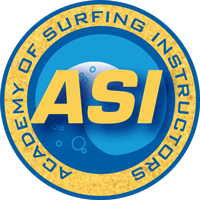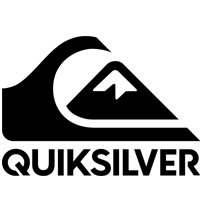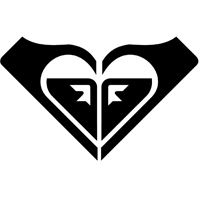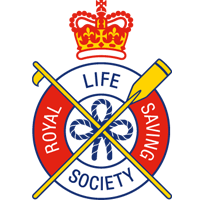[themedy_media type=”youtube” url=”https://www.youtube.com/watch?v=vUiN2FbKhEU#action=share”]
So you’re regularly getting to your feet and riding straight towards shore without any major problems. Well then, it’s time to start doing some turns!
Learning to turn is the gateway to doing manoeuvres and a whole new world of fun.
If you’ve learnt how to drive a car you’re probably aware of the concept of steering in the direction you’re looking, whether you want to or not! That’s because when you turn your head your shoulders will follow, causing the steering wheel to rotate (yep, that’s when the instructor swiftly grabs it, allowing that hapless cat to live another day).
Turning a surfboard isn’t so different, although there’s a little more in the way of body/board mechanics to get your head around before you start carving up the waves like Kelly Slater.
The Need for Speed
Here’s another analogy for you: When you’re riding a bike, the faster you’re going the easier it is to turn. If you try to turn whilst travelling very slowly you’ll probably come a cropper. The same laws of physics apply to turning a surfboard; you need to generate some velocity to transform you craft from an immovable object into an unstoppable force (or something like that!).
To turn you need some speed; otherwise you’ll bog. And the faster you’re going the more radically you’ll be able to turn.
Generally you’ll be travelling faster on a green face, so catching unbroken waves is another thing to start thinking about at this stage in your surfing. But sometimes getting out back is unrealistic. In which case keep your eyes peeled for the re-forms. Or maybe find a more sheltered spot.
But whether you’re surfing unbroken waves, re-forms or boring old white-water, just remember, speed – whether you’ve generated it via the take-off, a steep section or a bit of front foot squirt – is a prerequisite to doing a turn.
For a surfboard to turn one rail or the other needs to start cutting into the wave – hence the term ‘carving’. You’ve probably done the odd turn by accident due to your feet not being central, therefore applying pressure more on one side of the board than the other, thus ‘engaging’ the rail and causing you to veer off course (when all you wanted to do was stand there and wave to your friends damn it).
While experienced surfers will make subtle adjustments to foot positioning to aid turning (often subconsciously), this alone isn’t enough.
Heels & Toes
So this is what you need to do. You have to transfer body weight through either your heels or toes (depending on which way you want to turn) which will apply pressure to one side of the board more than the other, thus engaging the rail. Many people’s first thought as to how to do this is ‘you just lean, right?’ Well not really. When an experienced surfer turns it may look like they’re leaning, but if you look a little closer you’ll discover that their weight is still pretty much centred over a surfboard that’s no longer flat to the water.
So you don’t lean. Leaning is bad as your weight is no longer centred over the surfboard. What we do instead is…
Look, Point, Pivot…Turn!
So, going back to the steering wheel analogy, the first thing you need to do is look in the direction you want to turn. The rest of the procedure will then happen more naturally. The next thing to do is point with your arms. The resultant pivoting of the hips will then occur almost automatically, shifting weight onto your heels or toes without your weight moving away from the centre of the board.
Another important thing to think about is weight allocation between front and back foot – before and during the turn. As previously mentioned, you need speed to turn, which probably means pressure on the front foot. But if you’ve got too much weight on the front foot as you turn your rail will catch, or bog. So a quick dab of weight on the back foot just before you turn is usually a good tactic. Too much/long and you’ll stall and lose the wave! Once you’ve set your new line you can then re-apply pressure to the front foot and accelerate through your turn – and perhaps get ready for the next one!
Don’t expect anything crazy to start with. As a beginner or intermediate surfer you’ll probably be riding a big, unresponsive board, in which case you’ll have to keep the pointing and pivoting slow and steady to start with.




